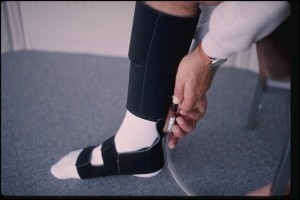At ACI Medical, we know that there are more home-use intermittent pneumatic compression devices (in other words, arterial pumps) similar to the ArtAssist® device out on the market, but here is the best we can say for them: they may work, they may not. This is because the ArtAssist® device is the only device of its kind to have been optimized to treat arterial disease through clinical trials at multiple independent centers. In other words, research done on the ArtAssist® device itself supports our claims about its capabilities.
pumps) similar to the ArtAssist® device out on the market, but here is the best we can say for them: they may work, they may not. This is because the ArtAssist® device is the only device of its kind to have been optimized to treat arterial disease through clinical trials at multiple independent centers. In other words, research done on the ArtAssist® device itself supports our claims about its capabilities.
Through numerous clinical trials, ACI Medical’s researchers have determined what the ArtAssist® device system needs to increase blood flow to the lower extremities as much as it does. If you’re thinking about getting an arterial pump to treat PAD (peripheral arterial disease), here’s what you should look for and why:
Cuff Specifications
Bladder Locations
It is important to have air bladders compressing the foot, ankle and calf regions because this promotes more blood flow to the skin.
When you are considering an arterial pump, also take a look at the size of the air bladders. The larger they are, the more tissue they’re
going to reach. The more tissue they reach, the more circulation.
Inflation and Deflation Rates
Research shows that quick inflation and deflation rates of the air bladders (less than half a second) put what’s called shear stress on your blood cells. Shear stress is good, because when your endothelial cells experience it, they release a muscle relaxant (or a vasodilator called nitric oxide) that helps open the small collateral arteries that are capable of naturally bypassing the blocked artery. It takes around 3 months, and the improvements are long-term. We call this process arteriogenesis or collateralization.
Now, this process I described does take a lot longer (typically between 3-6 months) than an open bypass operation, but for people who aren’t good candidates for surgery, it may be worth it to look into arterial pump treatment.
Cuff Pressure
Now you know that cuffs should have large bladders at the foot, ankle and calf and that they should inflate and deflate quickly. But what kind of pressure should the air bladders reach?
The answer that researchers found was 120 millimeters of Mercury (mmHg), which is about the pressure of a very firm handshake. Below this pressure, blood flow was not as high. Above 120 mmHg was unnecessary and, furthermore, uncomfortable for patients.
Clinical Research
You know I’ve been hinting at it, and I can’t stress it enough: make sure the device you invest in has clinical research supporting its claims. Research done at respected institutions is usually a very good sign for an arterial pump you’re considering. Also, if you can find a study that’s been done on patients with your diagnosis, even better!
UPDATE:
Being optimized to treat arterial disease is of the utmost importance. Research at the Mayo Clinic suggested that if a pump is NOT optimized for arterial disease, using it could actually DECREASE blood flow – a waste of your precious time and money! For example, some arterial pumps on the market have been modified from DVT prophylaxes and do not have much published clinical support.
So, like any decision you make concerning your health, I encourage you to do a bit of research and ask yourself: did the makers of this arterial pump design it specifically to treat arterial disease? Straight answers are the best.
Customer Service
Patient Compliance
Basically, make sure you can commit to using your arterial pump for however often your physician has prescribed it. As an example, we’ve seen the ArtAssist® device do amazing things for people – and it’s because they got into the habit of using it every day.
Patient Accommodation
Are you dealing with a special condition? Have you already had a below-knee amputation or are you unable to tolerate foot compression? Is your situation unique? It’s helpful to know that your arterial pump provider is knowledgeable enough to listen to what you’re going through and find a solution so you can get the therapy you need.
Obtaining Your Therapy
Just consider: how many numbers do you have to call to get an arterial pump? Do you have to go to a clinic every day or can you conveniently keep it at home? Find an arterial pump provider that makes it as easy as possible.
The Arterial Pump That Comes Out On Top
 There’s only one number to call if you want to order, prescribe, or just get more information about the ArtAssist® device: (888) 4 LEG FLO (888-453-4356). Alternatively, you can email info@acimedical.com any time of the day.
There’s only one number to call if you want to order, prescribe, or just get more information about the ArtAssist® device: (888) 4 LEG FLO (888-453-4356). Alternatively, you can email info@acimedical.com any time of the day.
For our references, see our Clinical Studies page.
To read documented success stories of ArtAssist® device patients, take a look through the Case Reports page.







